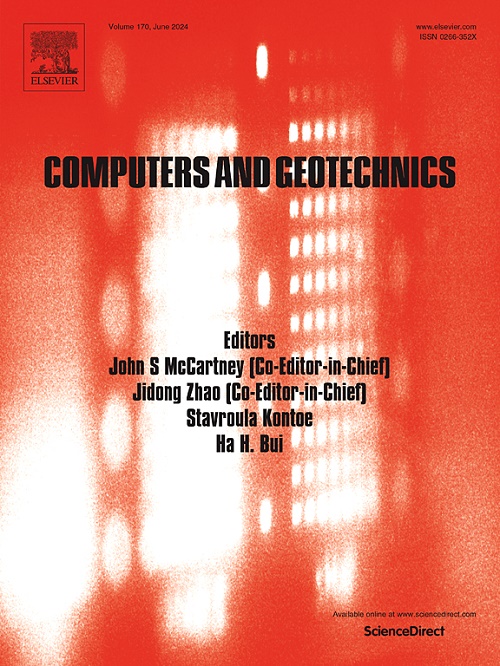Automatic simulation of soil-rock mixture seepage using image model directly
IF 6.2
1区 工程技术
Q1 COMPUTER SCIENCE, INTERDISCIPLINARY APPLICATIONS
引用次数: 0
Abstract
Meso-structures in soil-rock mixtures (SRM) exhibit complex geometries that significantly impact their seepage characteristics. The simulation of these structures through conventional methods, such as the Finite Element Method (FEM), necessitates the development of CAD (computer-aided design) models and the generation of conforming meshes. This process is often labor-intensive and can be cumbersome.
In this work, a seepage analysis that employs image models and structured grids, thus owning high automatic level, is first developed for SRM. Compared to traditional boundary (2D) or surface models (3D), image models can sincerely and efficiently capture the meso-structure of SRM. Using structured grids significantly alleviates the preprocessing workload associated with generating conforming meshes. The element size of the structured grid is completely independent of the pixel size of the image model, facilitating a flexible trade-off between computational accuracy and time efficiency. Weak discontinuities in the seepage field at the soil-rock interfaces are accurately represented using continuous-discontinuous (C-D) trial functions using the Numerical Manifold Method (NMM), enforced through penalty methods. Numerical examples investigate the computational accuracy and efficacy of the proposed method. More promisingly, the direct use of image models and structured grids in simulating SRM greatly reduces manual intervention, demonstrating the new method’s outstanding automation advantage and providing a methodological foundation for the development of related unmanned hardware devices.
直接利用图像模型自动模拟土石混合体渗流
土石混合体(SRM)的细观结构表现出复杂的几何形状,这对其渗流特性产生了重大影响。通过传统的方法,如有限元法(FEM)对这些结构进行模拟,需要开发CAD(计算机辅助设计)模型并生成符合的网格。这个过程通常是劳动密集型的,而且可能很麻烦。本文首次提出了一种基于图像模型和结构化网格的渗流分析方法,具有较高的自动化水平。与传统的边界模型(2D)或表面模型(3D)相比,图像模型可以真实有效地捕获SRM的细观结构。使用结构化网格大大减轻了与生成一致性网格相关的预处理工作量。结构化网格的元素大小完全独立于图像模型的像素大小,有助于在计算精度和时间效率之间进行灵活的权衡。采用数值流形法(NMM)用连续-不连续(C-D)试函数精确地表示土-岩界面渗流场的弱不连续,并通过惩罚法强制执行。数值算例验证了该方法的计算精度和有效性。更有希望的是,在模拟SRM时直接使用图像模型和结构化网格大大减少了人工干预,展示了新方法突出的自动化优势,并为相关无人硬件设备的开发提供了方法论基础。
本文章由计算机程序翻译,如有差异,请以英文原文为准。
求助全文
约1分钟内获得全文
求助全文
来源期刊

Computers and Geotechnics
地学-地球科学综合
CiteScore
9.10
自引率
15.10%
发文量
438
审稿时长
45 days
期刊介绍:
The use of computers is firmly established in geotechnical engineering and continues to grow rapidly in both engineering practice and academe. The development of advanced numerical techniques and constitutive modeling, in conjunction with rapid developments in computer hardware, enables problems to be tackled that were unthinkable even a few years ago. Computers and Geotechnics provides an up-to-date reference for engineers and researchers engaged in computer aided analysis and research in geotechnical engineering. The journal is intended for an expeditious dissemination of advanced computer applications across a broad range of geotechnical topics. Contributions on advances in numerical algorithms, computer implementation of new constitutive models and probabilistic methods are especially encouraged.
 求助内容:
求助内容: 应助结果提醒方式:
应助结果提醒方式:


